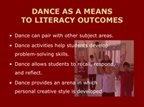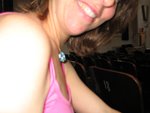Those Who Can, Also Teach
The discussion that ensued was lively and the professor allowed for everyone to express ideas. At one point, the discussion moved to questioning why some professions included on the list are more highly respected than others, and the place of the dancer herself in the “hierarchy of dance.” Then came the comment that I should have responded to with more than an audible gasp of horror. It was a comment that dance critics are just people who can’t dance, so they write about dance, and those that comprise dance audiences are not dancers, that’s why they are in the audience. Seriously, I gasped when these statements were expressed, and the professor did not address them, and I remained silent for some strange reason, I think, because I had already spoken twice during the discussion and didn’t want to appear to dominate the remarks. And yet, I have seriously been stewing for four days now.
There is a stereotype that critics are just dancers that didn’t make it, so they have to criticize, and this may spill out into other dance-related fields as well. Then there is the statement that, “those that can, do, those that can’t, teach.” You could fill in a number of things to take the spot of “teach” in that statement, such as “criticize,” etc. At one time I thought that that stereotype was the truth about the bitter dance critic who wants to have power over dance companies, but I’ve grown past that. I am a dancer. I love to write. I would love to further develop my writing skills to write about dance. There are many other aspects of dance that I would like to experience. That’s what drew me to want to develop myself as a dance teacher, not because I couldn’t make it as a dancer, but to enrich myself as a dancer and add dance teacher to my definition of myself as a dancer. So, although that kind of negative thinking may exist, I refute it wholeheartedly, and think that we collectively must think the same way, or else we are shooting ourselves in the foot becoming teachers. I am not a frustrated dancer that didn’t make it in the real world of dancing, rather, I am a dance artist that wants to continue to improve in all areas of dance so that I can be the most effective teacher possible.




